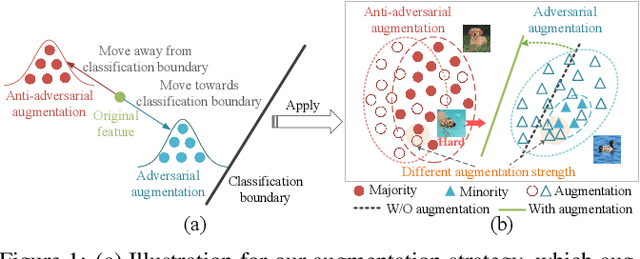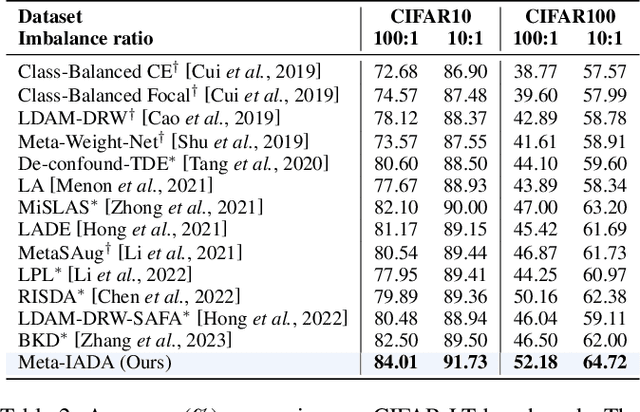Zhemg Lee
Enhancing In-Context Learning via Implicit Demonstration Augmentation
Jun 27, 2024



Abstract:The emergence of in-context learning (ICL) enables large pre-trained language models (PLMs) to make predictions for unseen inputs without updating parameters. Despite its potential, ICL's effectiveness heavily relies on the quality, quantity, and permutation of demonstrations, commonly leading to suboptimal and unstable performance. In this paper, we tackle this challenge for the first time from the perspective of demonstration augmentation. Specifically, we start with enriching representations of demonstrations by leveraging their deep feature distribution. We then theoretically reveal that when the number of augmented copies approaches infinity, the augmentation is approximately equal to a novel logit calibration mechanism integrated with specific statistical properties. This insight results in a simple yet highly efficient method that significantly improves the average and worst-case accuracy across diverse PLMs and tasks. Moreover, our method effectively reduces performance variance among varying demonstrations, permutations, and templates, and displays the capability to address imbalanced class distributions.
Boosting Model Resilience via Implicit Adversarial Data Augmentation
Apr 25, 2024



Abstract:Data augmentation plays a pivotal role in enhancing and diversifying training data. Nonetheless, consistently improving model performance in varied learning scenarios, especially those with inherent data biases, remains challenging. To address this, we propose to augment the deep features of samples by incorporating their adversarial and anti-adversarial perturbation distributions, enabling adaptive adjustment in the learning difficulty tailored to each sample's specific characteristics. We then theoretically reveal that our augmentation process approximates the optimization of a surrogate loss function as the number of augmented copies increases indefinitely. This insight leads us to develop a meta-learning-based framework for optimizing classifiers with this novel loss, introducing the effects of augmentation while bypassing the explicit augmentation process. We conduct extensive experiments across four common biased learning scenarios: long-tail learning, generalized long-tail learning, noisy label learning, and subpopulation shift learning. The empirical results demonstrate that our method consistently achieves state-of-the-art performance, highlighting its broad adaptability.
 Add to Chrome
Add to Chrome Add to Firefox
Add to Firefox Add to Edge
Add to Edge